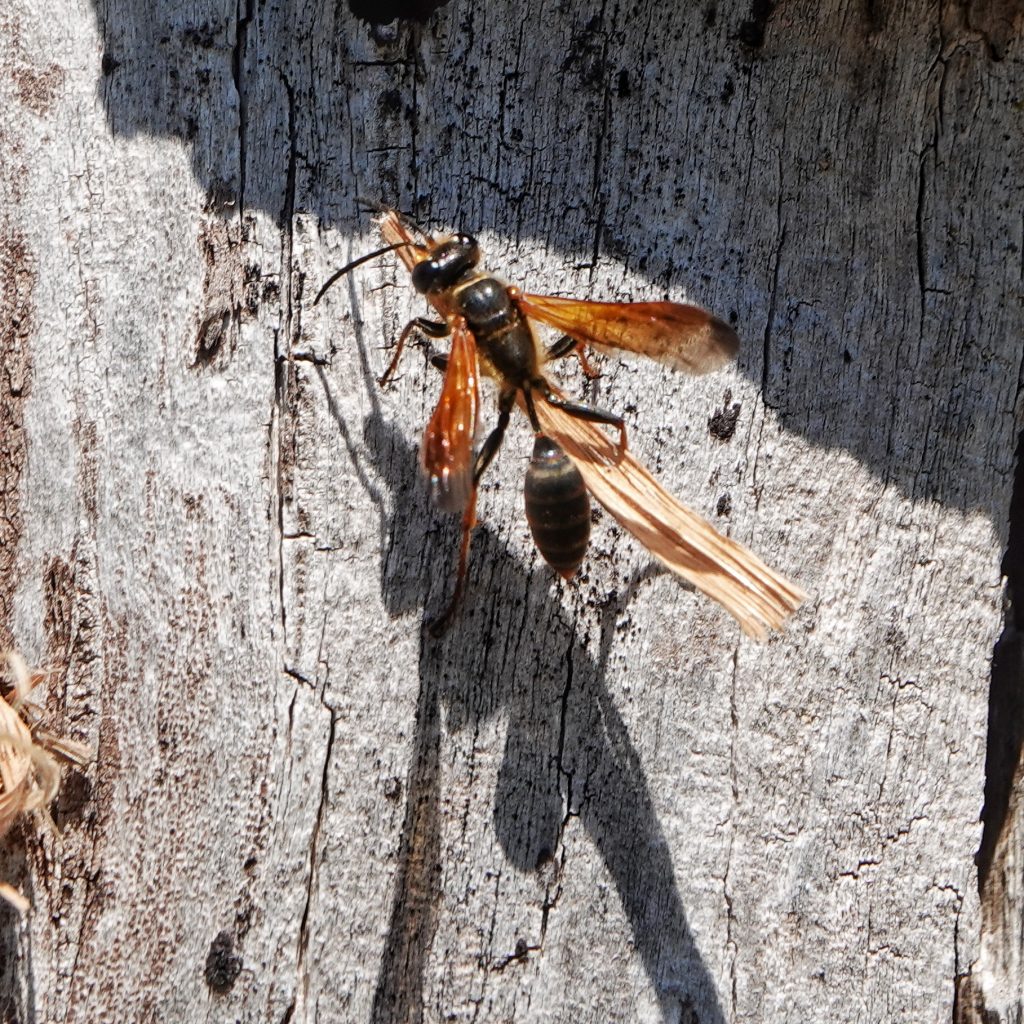
I want to thank my friend Craig Sondergaard for this profile. He still works medical transportation, the same job I used to do, and a couple days ago he called to tell me that there were grass carrying wasps circling the snags near the parking spot we always used when waiting for clients at Legacy Hospital. Until that point I knew nothing about grass carrying wasps, and couldn’t have told you the difference between an Isodontia and a yellowjacket. But Craig sounded stoked, and I had errands to run in that general area, so, even though chasing someone else’s bug sighting seldom works out for me, I decided to stop and check it out.
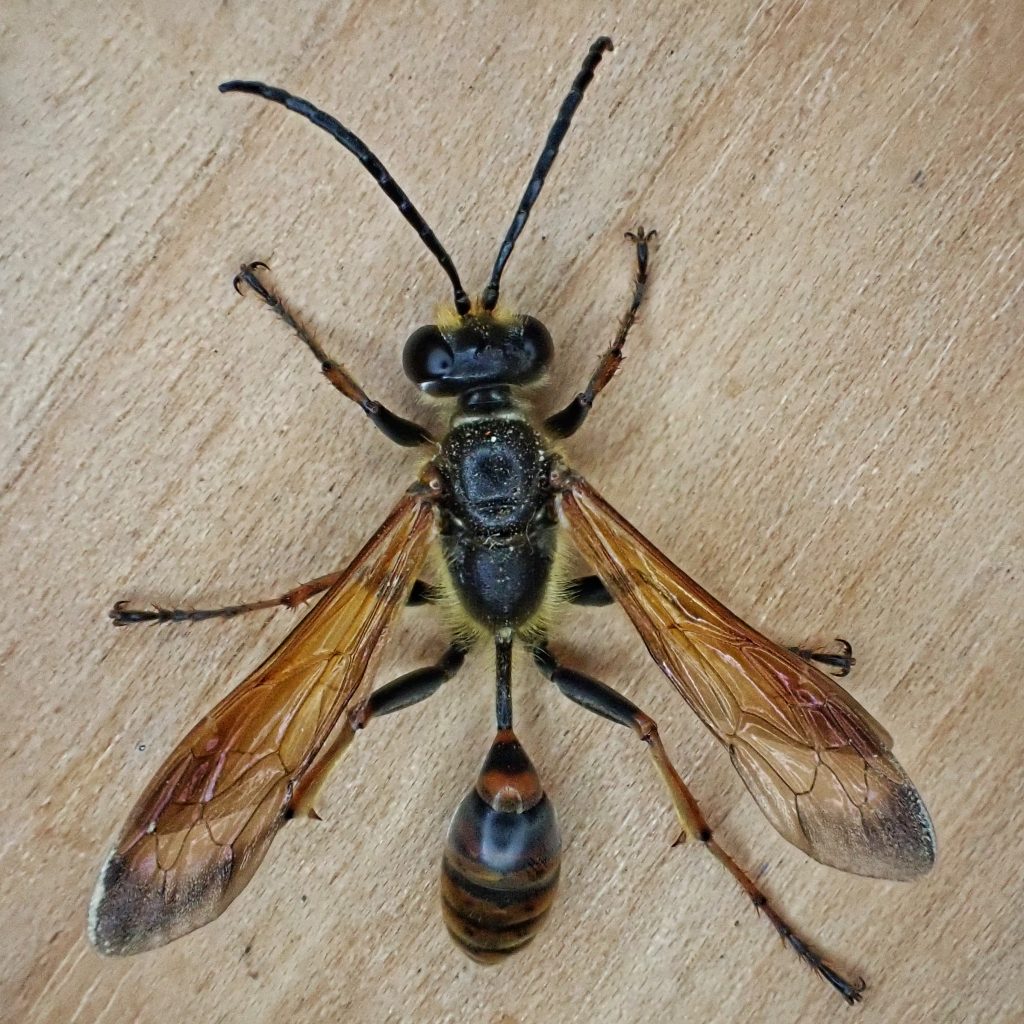
And there they were, just where Craig said they’d be. I don’t know how he identified them, because these are fast moving wasps that don’t touch down very often, and if I’d found them on my own I’d have probably ignored them, assuming I’d never figure out what they were. He warned me about that so I didn’t even take my camera when I first approached the snags. And even though there were well over a dozen of them in view at any one time, it took me an untold number of swings and at least 15 minutes before I managed to net one. Then I went and got my camera.
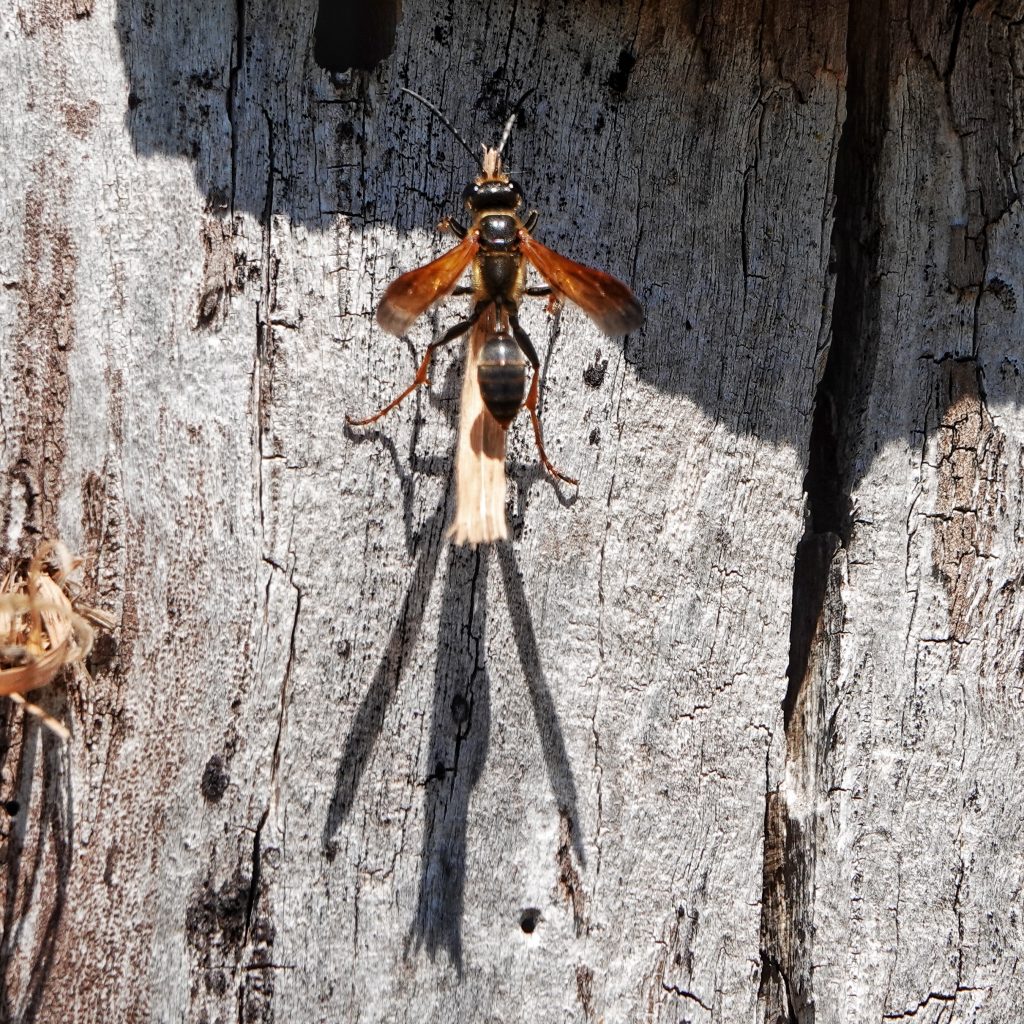
I finally learned to watch for ones carrying a length of grass, because they were transporting it to nests in the snag, and would land to install it. There were a few obvious burrows in the tree, and I saw a few wasps enter those, but most of the time they landed near cracks in the bark and disappeared into them. Even knowing what to watch for they were usually too quick for me, and I ended up with dozens of photos that were either woefully blurry, or showed a space recently occupied by a grass carrying wasp. But I did get decent photos of a few, and the one I captured was quite cooperative after an hour in the fridge.
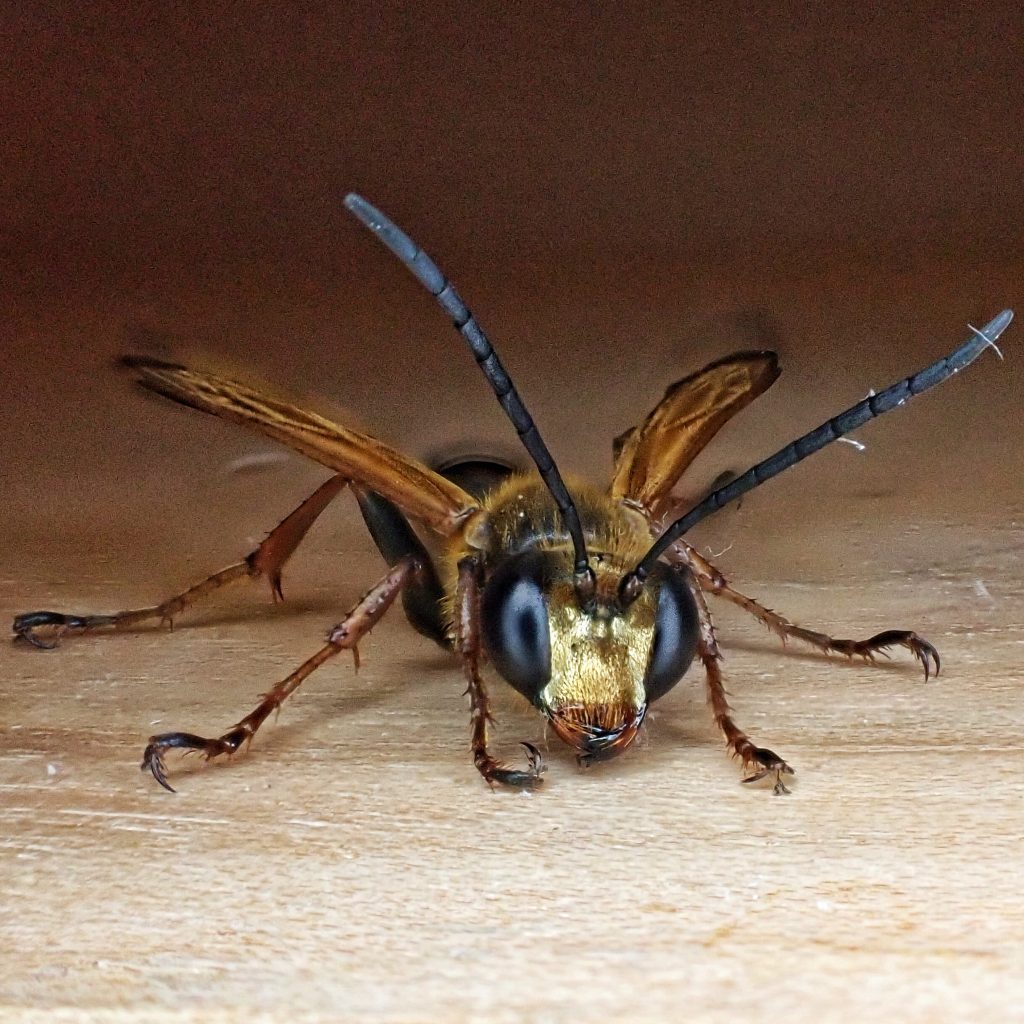
Identification turned out to be pretty straightforward. The golden hairs on the thorax, combined with a black petiole, light colored tibia and tarsi, and red marked abdomen, is diagnostic for these members of the family Sphecidae (thread waisted wasps). And in our area the other Isodontia either have very pale thoracic hair (I. mexicana) or black thoracic hair (I. auripes and I. philadelphica). Like most solitary wasps, Elegant Grass Carrying Wasps are not aggressive, and if they are not threatened they are harmless.

These wasps parasitize Orthoptera (particularly the introduced katydid Meconema thalassinum in our region, although tree crickets [mostly Oecanthus fultoni] predominate later in the season), paralyzing a host and planting an egg within it (often amputating its legs and antenna to better fit the nest size), and Craig said there were numerous katydid nymphs in the nearby buttercups and grass, although I got confused about their location and didn’t find any. But it was also exciting that there were a few Anthrax irroratus bee flies around the snag (I collected and identified one and will be profiling it shortly), and they are known hyperparasites of the larvae of Isodontia wasps. So there may have been a complete parasitoid food chain around those old snags in an abandoned lot.
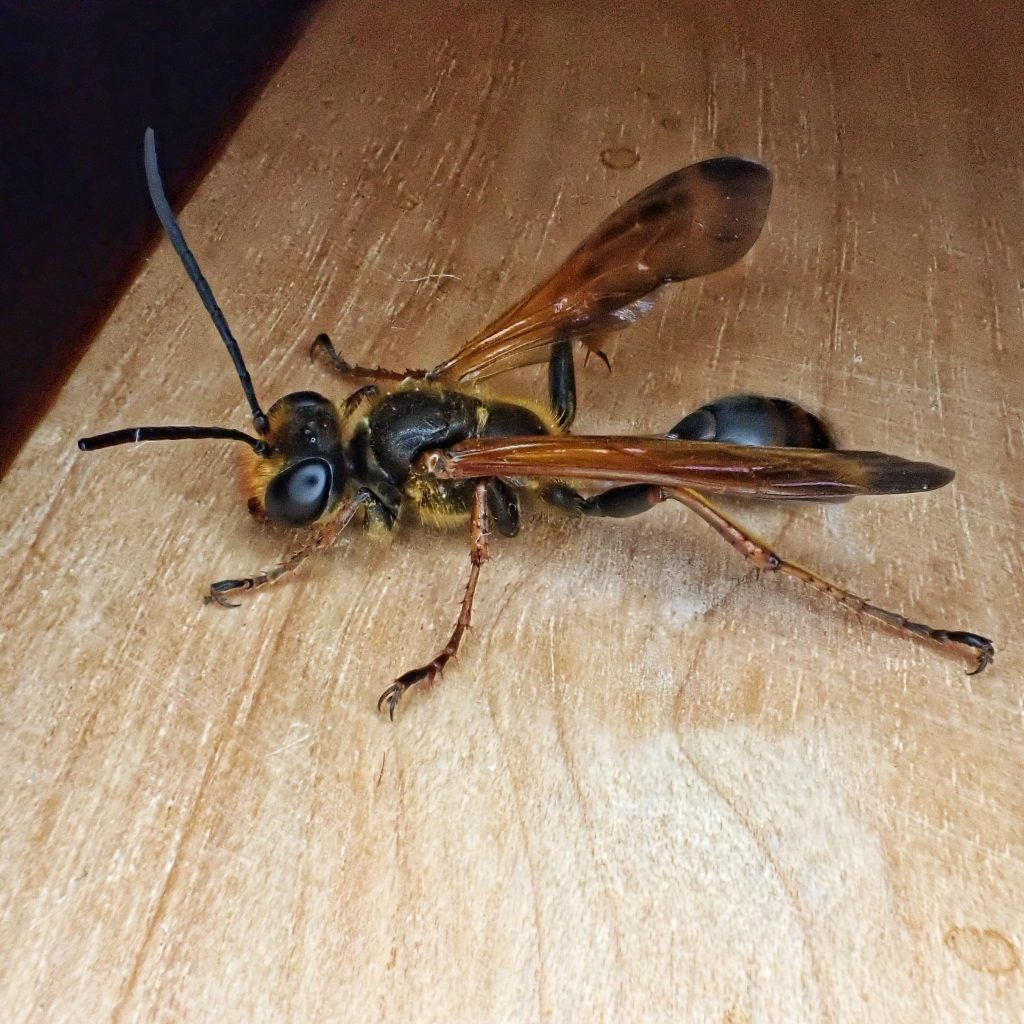
They use the grass to line the cells where the hosts are imprisoned, as well as to divide the cells into multiple chambers. They do not dig their own tunnels into the wood, utilizing natural holes and gaps, and Eric Eaton, in his fascinating book “Wasps: The Astonishing Diversity of a Misunderstood Insect” (2021), says that “…grass-carrier wasps of the genus Isodontia have taken to exploiting the tracks of sliding windows for their nesting needs. Homeowners are puzzled to find grass, ‘worms’, and paralyzed tree crickets in the frame”. Female offspring are provided with more food and are placed deeper in the nest than males. When the nest is complete they plug the opening with a ‘broom’ of grass.
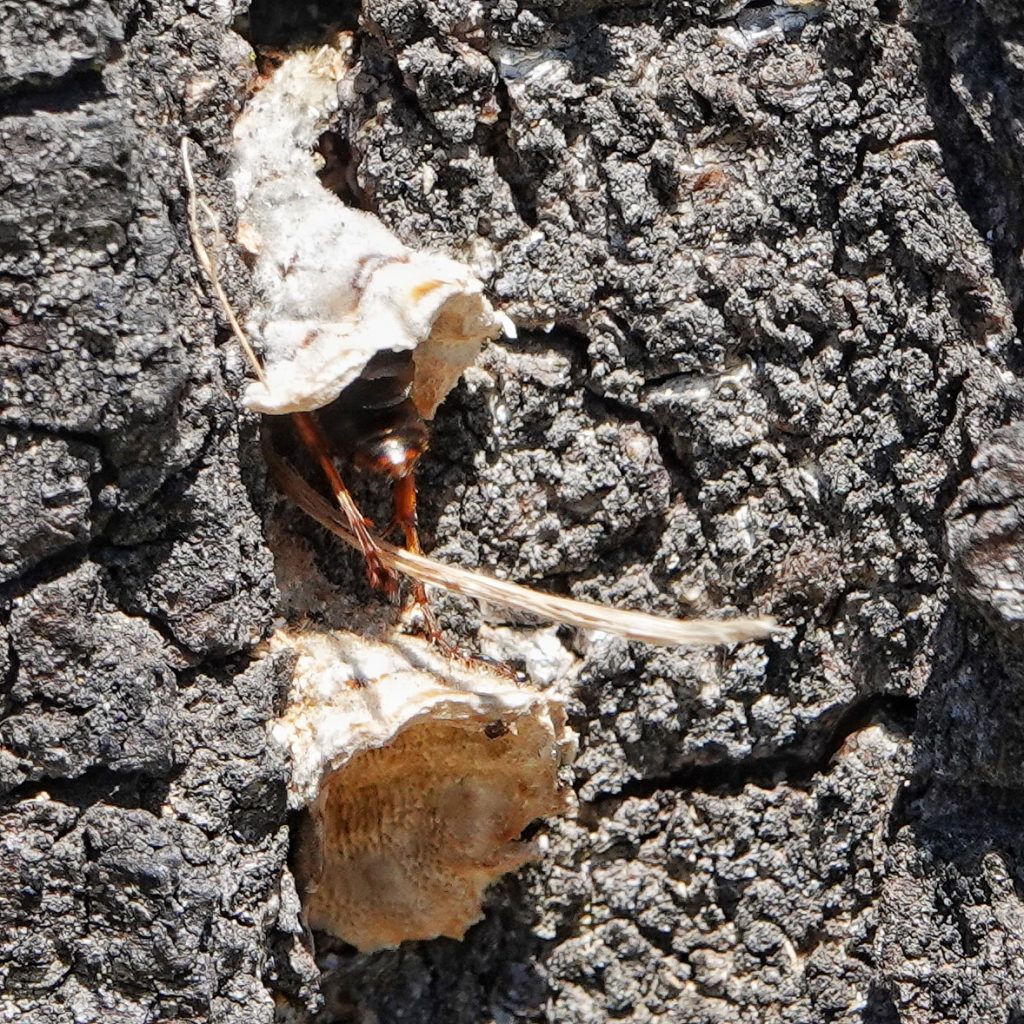
Description-Medium sized (14-17mm) black and reddish brown wasp with a narrow, elongated waist, reddish gold hair on thorax and head, and orange-tinted wings; metasoma (abdomen) is black to reddish brown, usually banded; femora are black, tarsi and tibia are reddish brown.
Similar species–Isodontia elegans is the only golden-haired Isodontia in our region; I. mexicana has very pale hair on thorax, brown spot on T1; I. auripes and I. philadelphica have black thorax hair; Sphex spp. have more orange on abdomen, and shorter waists.
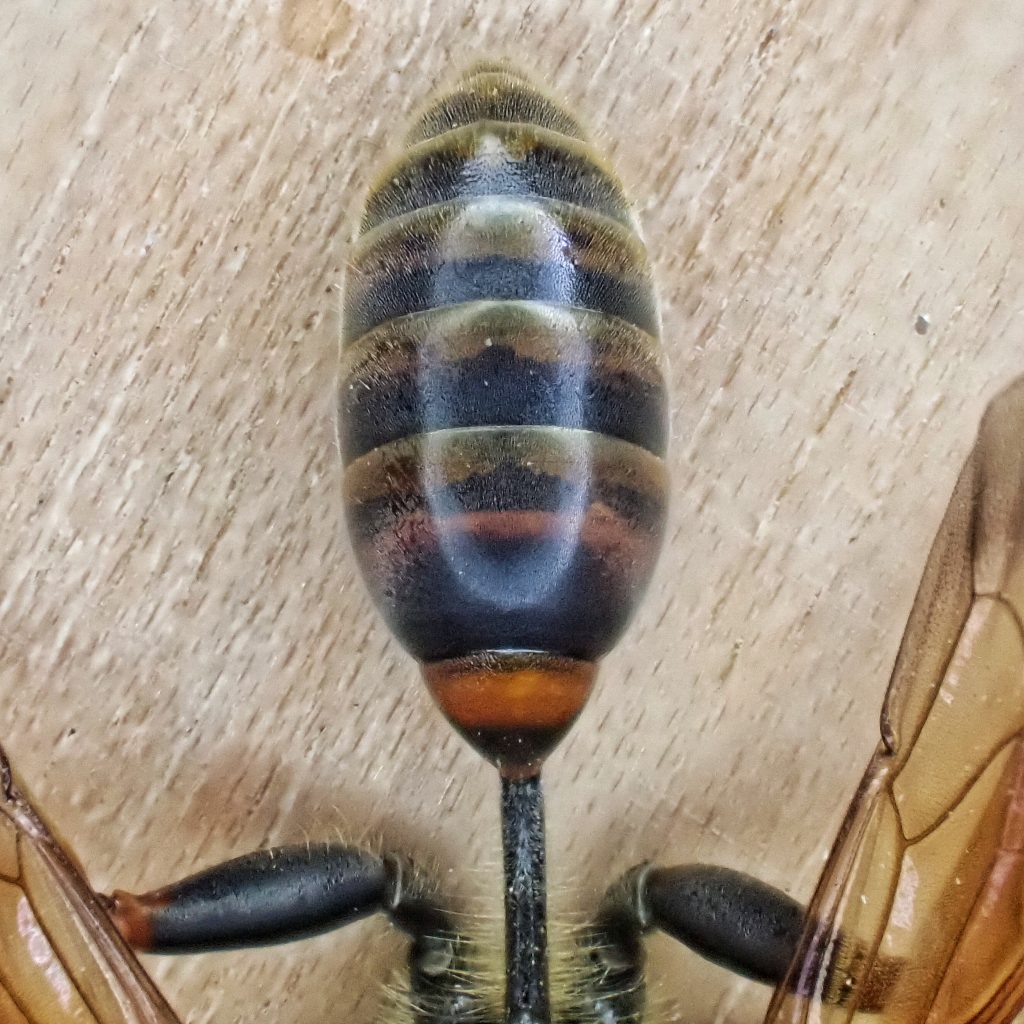
Habitat-Can potentially be found wherever there are larval hosts and trees.
Range-Native to western North America; region wide.
Eats-Larvae are parasites on tree crickets and katydids (especially Meconema thalassinum), and probably other Orthoptera; adults take nectar at various flowers.
Eaten by– Flies of the families Tachinidae, Sarcophagidae (Amobia, Senotainia), Phoridae (Megaselia), Anthomyidae (Eustalomyia), and Bombyliidae (Anthrax) have been found parasitizing nests of Isodontia, and Chalcid wasps of Pteromalidae (Epistenia coeruleata) and Eulophidae (Melittobia chalybii) have been reared from the nests I. elegans; velvet ants in Sphaeropthalma have also been found in I. elegans nests.
Adults active-June to September
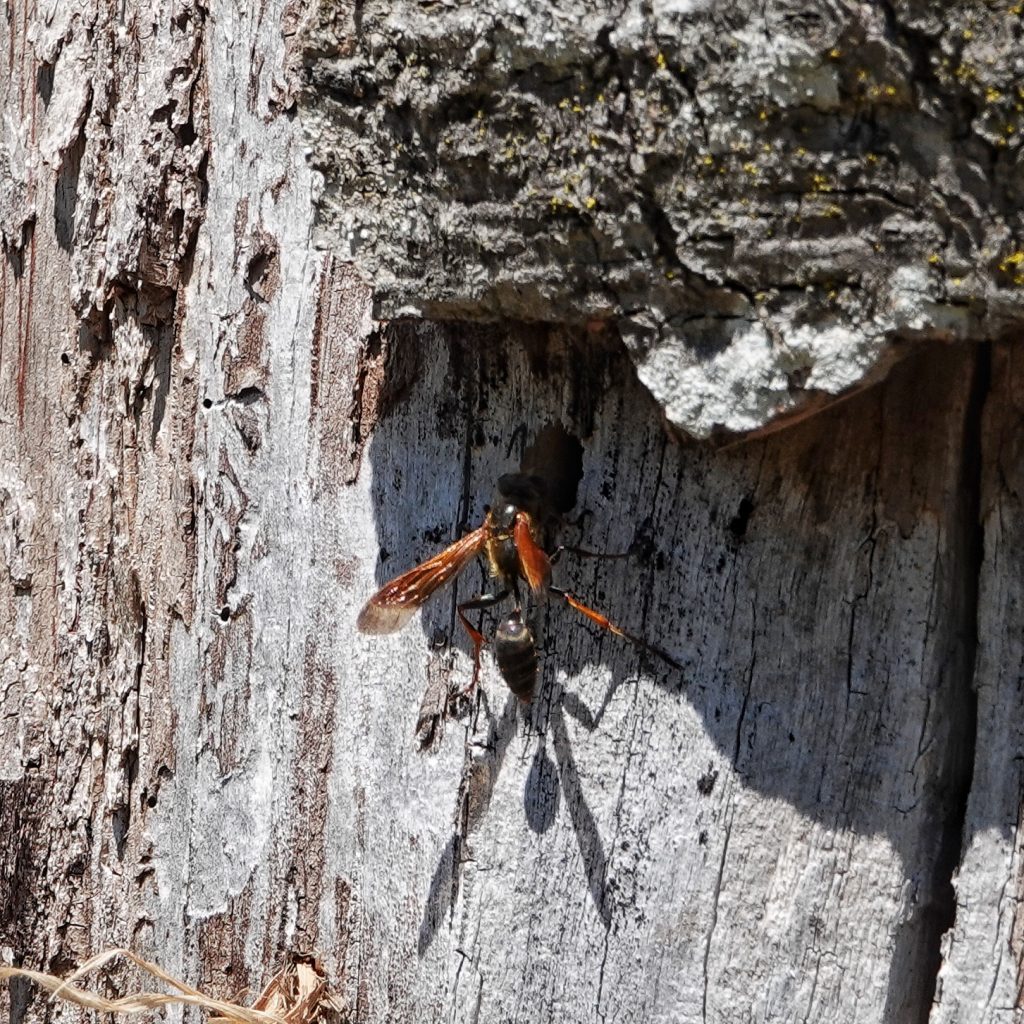
Life cycle-They prefer pre-existing holes from 7-12mm in diameter, but will apparently also utilize large cracks in the bark, and other narrow but accessible locations; constructs 1-15 cells in each burrow, dividing them with grass blades and other plant materials, and plugging the burrow when it has been fully provisioned; daughters are placed in the most interior cells, which are larger and have stronger partitions than those of the sons closer to the surface; apparently they begin nesting when daily high temperatures are consistently above 80⁰; they build and provision 1 cell per day, in which is laid a single egg; eggs hatch in 2-6 days, and the larval stage lasts 5-11 days; pupation takes up to 40 days after winter diapause; total life span is about a year.
Etymology of names– Isodontia is from the Greek words for ‘equally toothed’, and probably refers to the size of the teeth on the mandible, but I can not corroborate this. The specific epithet elegans is from the Latin word for ‘elegant/select/choice/fine’, although I can’t find out what is especially elegant about this species compared to the other beautiful Isodontia wasps.
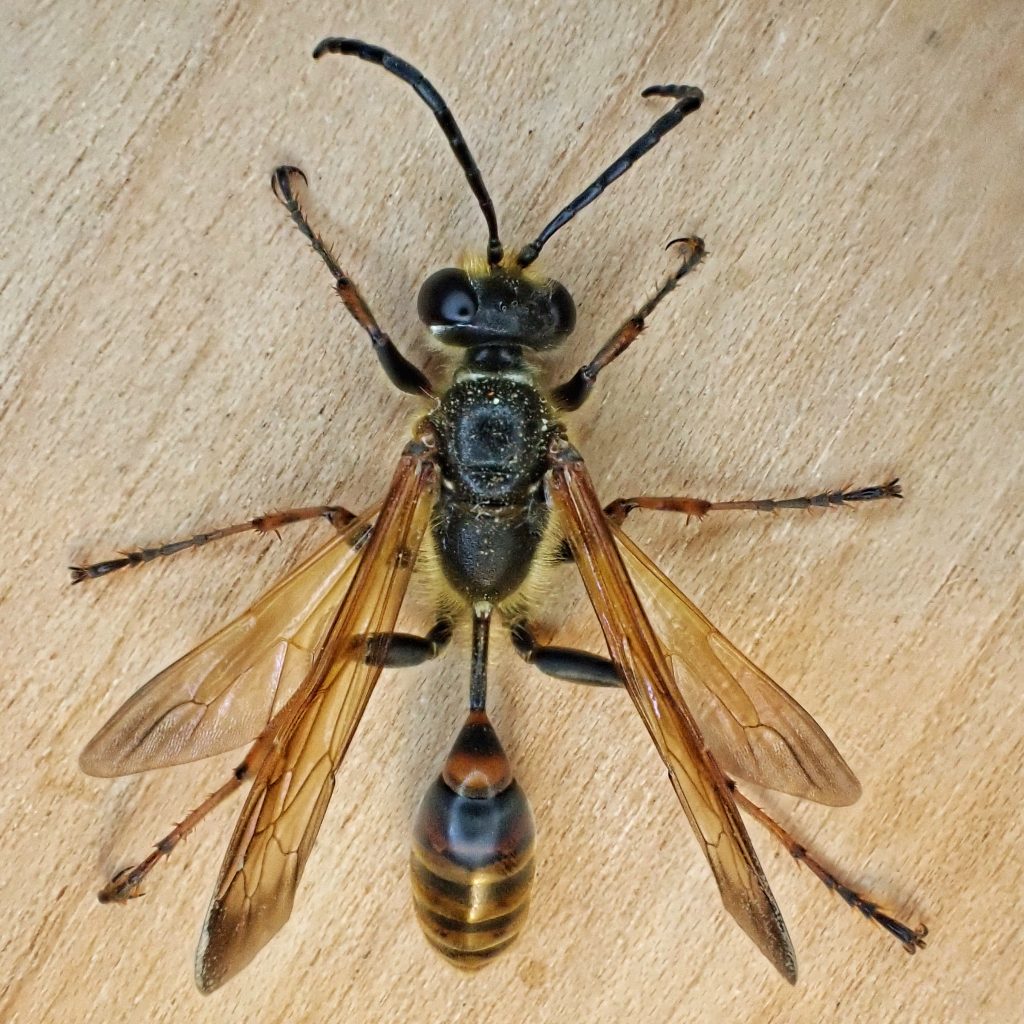
Species Isodontia elegans – Elegant Grass-carrying Wasp – BugGuide.Net
Genus Isodontia – Grass-carrying Wasps – BugGuide.Net
nests and prey of isodontia elegans – Google Scholar
Sphecid Wasp – Isodontia elegans – North American Insects & Spiders
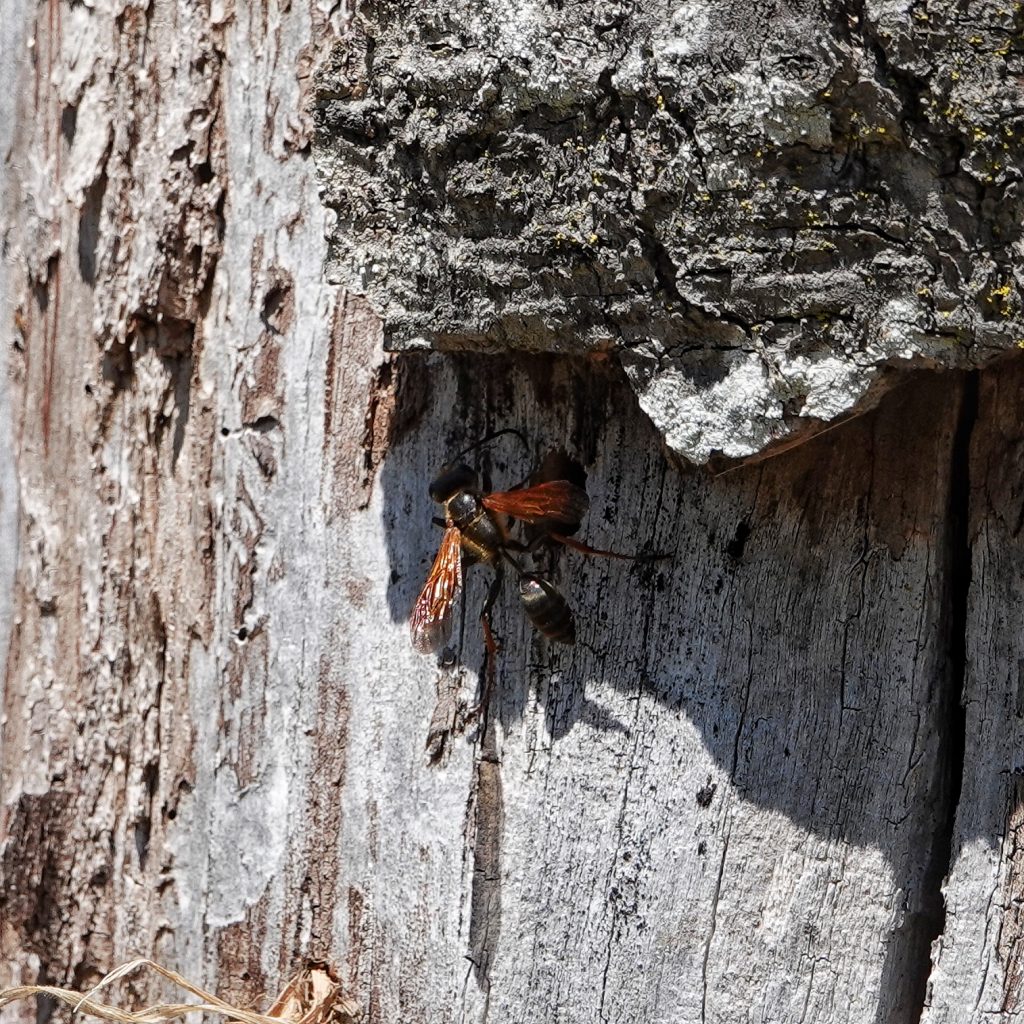
Wonderful article! I really enjoy your blog!
Just calling your attention to a possible spelling error you may want to correct: “And in our area the other Isidontia either have very pale thoracic hair… “
Thanks Sharon, for your appreciation, and for pointing out my typo! I fixed that.
Awesome! I’m reading Eric Eaton’s book now and loving it. At our apartment in Seattle a few years ago I got to observe Isodontias doing exactly what he describes: flying in and out of the track of our sliding window with grass.
Very cool! Thanks for telling me that!